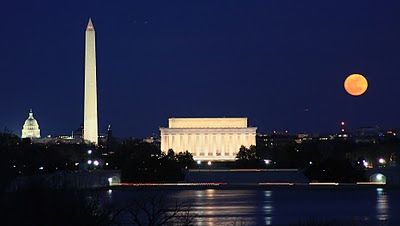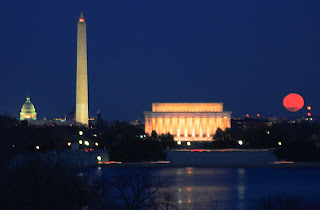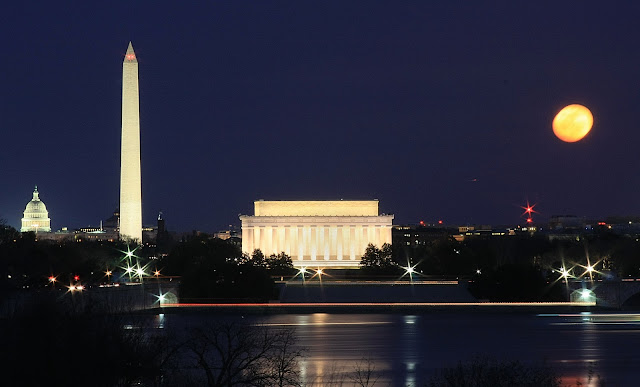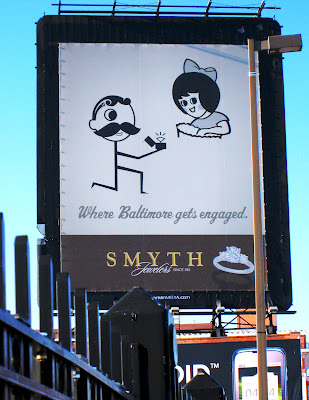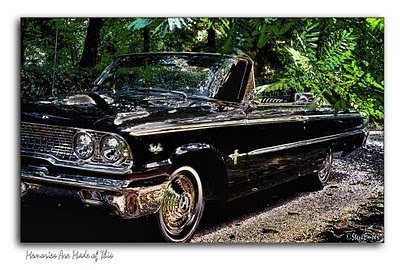The original Baltimore Friendship International Airport ©Steve Ember
A few years back, I wrote a story for Airliners magazine about my lifelong love affair with airplanes. It was called “Confessions of an Airplane Lover.” Perhaps you read it or maybe you’ve listened to the CD.
Early in the narrative, I mentioned how that love affair began, with Sunday morning visits with my Dad to “a sleepy little airport called Friendship.”
Recently I was asked to collaborate on a program about Baltimore, the city in which I grew up, for The Voice of America. The person who undertook the project learned from our mutual colleagues that I was from Baltimore, and as the program was to delve into the very quirky “Bawlmerese” dialect that many Baltimoreans speak and I can do a pretty wicked Bawlmerese…well, one “fing” led to the next there, Bunky. (For the uninitiated, you’ve just read some Bawlmerese.)
I was also invited to illustrate the story with some of my photos of Baltimore, both recent and “vintage.”
As I started toting around a camera before I even had a driver’s license, I was pretty certain I could document the Baltimore of well before the showplace Inner Harbor and revitalized downtown. The only question was: Was there any remote chance of locating my slides from roughly 50 years ago?
Now, over the last decade or so, I’ve been fairly organized in terms of classifying and filing slides and negatives. I wrote, in another post, of my “kid on Christmas Morning” glee in rediscovering scores of “legacy” images when I finally purchased a slide scanner in 2009 to begin integrating my film images into a digital workflow. Lots of happy rediscoveries there, but they didn’t include any of the “old” Baltimore. Guess I just wasn’t digging quite deep enough.
But the VOA story was, well, motivation. I once interviewed the legendary Boston Pops conductor Arthur Fiedler. I marveled at his energy for an octogenarian. He matter-of-factly said, “You want something done? Ask a busy man. He’ll always find the time.”
That advice struck me as sounding a bit paradoxical, but I guess it stuck in one of those little “nooks and crannies” of gray matter. And I am surprised at how often I find myself recalling it, as I burn the candle at both ends while scrambling on multiple projects. And while I was, indeed, on multiple projects, I could not keep from rummaging deeper and deeper into the past on this quest to unearth my old Baltimore slides.
Did I mention they were all over creation? Goodness, does any photographer sans assistant ever manage to file all of his images? Somehow, I think that would mean forsaking shooting. And that, we camera-toters know, is an absolute impossibility.
So, with dogged determination I find two boxes full of Ansco (does that tell you how old?) slide trays. I mean, folks, this was pre-Carousel! Yep, straight, rectangular Ansco trays of the type that hold forty slides.
Now, let’s see…I bought my first Kodak Carousel projector in 1964. So the slides in those Ansco trays are…OK, not to put too fine a point on this, I learned to drive in a five year old 1955 Chrysler and remember watching a lot of black and white TV. I think that makes me what we call “seasoned.”
And so are some of the slides I hoped to find of my old home town to illustrate that Baltimore story on the VOA web site.
I knew I was getting warm when I found the tray containing slides proudly taken of my first “new” car, my 1963 Ford Galaxie 500 convertible gleaming in the summer sunshine on the driveway of the house in which I grew up. I’ll tell you about her in another ramble and show you my first automotive “object of desire.”
But, now, the hunter had the scent. Hmm, Ford Galaxie…First airplane trip, to Niagara Falls – in 1963…Aha! Baltimore in the early 60s!
Pay dirt, including the “old” Baltimore downtown skyline, rising behind the dingy docks, sheds, and warehouses of the original Inner Harbor, long before we even called it the “inner” harbor, a place my Dad warned me to stay away from when my teen buddies and I would go out prowling in the car on Friday nights. Yes, it was grim down there after dark. But no worse than any other big industrial city in need of revitalizing. They all have their underbellies and skid rows. That was Baltimore’s Inner Harbor in the ‘50s and ‘60s…
But this little story started out talking about “a sleepy little airport called Friendship,” didn’t it?
Loves and passions always start at some fondly remembered event. And the brighter they burn, the more vividly we remember how they started. Sometimes, we’re even lucky enough to possess visual mementos. My passion for airplanes started with those Sunday morning trips “out to Friendship.” Friendship was Baltimore’s “new” airport, undertaken with great civic pride a few years after the Second World War ended. It opened in 1950, dedicated by President Harry S. Truman, and was named for the area in Anne Arundel County, just south of the city, where it was built.
I’m guessing I first visited Friendship sometime in 1955 or ’56, as I recall riding shotgun down the Baltimore Washington Parkway with my Dad in our then-new ’55 Chrysler with its big V-8 engine.
It was a gem of an airport. Clean, modern, friendly, and back when I was a ten year old with my first camera, a Brownie Hawkeye, not very busy. That would come a few years later.
When I was first visiting Friendship with my Dad, it was still playing second fiddle to the more established Washington National Airport. Indeed, it was not uncommon, if one was flying across the country, to hop a connecting flight out of Friendship on a “feeder” airline’s DC-3 or Martin 4-0-4 for the 12 minute flight over to DCA to rendezvous with a major airline’s DC-6 or -7 or Constellation. Not always, of course, but Friendship had some catch-up ball to play back then.
But then came the Jet Age, and Friendship truly spread her wings. Those big shiny 707s and DC-8s that ushered in the age of jet travel needed much longer runways than National provided. And Washington-Dulles wasn’t yet in operation. So, by default, Friendship, with its nice long runways, became the jetport for the Washington Baltimore area, and the “International” in her name took on real meaning as the sleek 707s of Pan American and TWA boarded passengers in Baltimore for overseas destinations. But that’s getting way, way ahead of this nostalgic little journey…
You know what was wonderful about Friendship? There was a long, broad, open promenade running the entire length of the roof of Friendship’s Pier B. Well, what would you expect a concourse to be called at an airport serving a seaport city? Friendship had three “piers,” A,B, and C. Pier B, being in the middle, was a great place for that open promenade, as it allowed visitors to look out on the tarmac areas serving most of the airport’s real estate.
From that wonderful open promenade, one looked down at Capital Airlines DC-3s and DC-4s, Eastern Airlines Martin 4-0-4’s, the occasional TWA Constellation (there was glamour!). This was before enclosed jet-ways. Passengers would walk out from the gates below, across the tarmac, sometimes along a red carpet, and up the stairs to their plane, where they were greeted by graciously smiling, attractive stewardesses in tailored uniforms, often wearing white gloves. Back then, if you loved airplanes and air travel, you could truly get up close and personal with your aluminum clad radial-engined magic carpet.
Well, there’s more about those saner days of air travel in “Confessions of an Airplane Lover.” But the slide I turned up with such glee, while certainly not one of my more “glamorous” images was evocative in ways I’m not even sure I could describe. You see, Friendship International Airport – is no longer there. Oh, the nice long runways are still there, but the neat post-war modern airport building was razed to make way for a huge BWI mega-terminal, and the original airport’s modest but forward-looking heart and soul got swallowed up by the inevitable march of progress. That’s why my photo is, to me – I’ll say it boldly – an all-out gem.
I suppose if I were interested in hiding my “seasoned” age, I would not have posted the image. Friendship’s clean-lined terminal looked that way for several years after the photo was taken, but the cars out front, speak to the slide’s age. And no, I wouldn’t think of cropping or air-brushing or cloning them away. Couldn’t find a date on the slide, not even the lab’s processing date stamp, but I’m guessing I took it in 1959 or ’60.
They say a picture’s worth a thousand words. I suspect I may have written a bit more than the proverbial thousand. But that little slice of silver coated celluloid surrounded by a cardboard mount is, well, almost as powerful to me as finding that photo you took of your first flame and being overwhelmed at how beautiful she was in her wool sweater and skirt on that very special sunny autumn afternoon.
Now, I have a splendid visual token of the handsome, inviting portal that transported me to the delights of a life long love affair with airplanes.
Oh, yes, thank you, City of Baltimore and Maryland Port Authority. Thank you, VOA Special English.
And thank you, Dad.
©2011 Steve Ember
|
